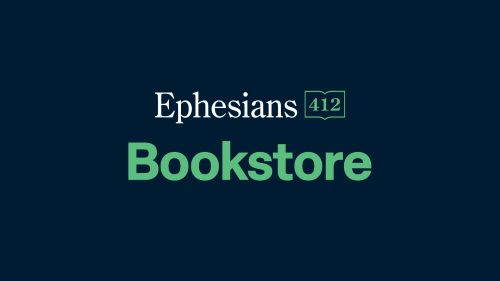It’s true that October 31st is Halloween, but it way back in 1517 it also become Reformation Day. That means in addition to the pictures of costumes and posts of candy on social media you will probably also see lots of posts of old guys in robes. Why is that? Well 498 years ago on October 31st, Martin Luther, a Catholic monk, walked up to All Saints Church in Wittenberg, Germany, and nailed to its doors the famous “95 Theses.” These 95 points outlined errors and practices that Luther saw in the Catholic Church and called for church reform (hence the name “The Reformation” or “Reformed Theology”). The result was the split between Catholicism and Protestantism. Catholics rejected Luther’s points, and those who sided with Luther and his contemporaries split to make the Protestant Church. Historically this was and is one of the most influential moments in the Christian church. Books and volumes have been written tracing the ripples of the Reformation, but here are three quick things practical things in our churches today which owe their roots to October 31st, 1517.
1. Your Bible
The Reformers didn’t write the Bible, but for many lay people during the 16th century, they might as well have. Up until this point the Catholic Church had read the Bible at Mass only from the Latin text (called the Vulgate). So if you went to church, you couldn’t pull out your pew Bible, look at a screen, or check an app. You had to listen to the priest read the Bible in Latin, and unless you spoke Latin (which was typical only of the wealthy and educated), you were unable to hear the Bible in your own language.
Two Hundred years before Luther nailed his theses to the door, the roots of the Reformation were being laid by men such as John Wycliffe and John Huss. Both men were kicked out of the Catholic Church for their critiques, and both were condemned as heretics. But in 1380 Wycliffe produced the first full copy of the New Testament in English, and the Old Testament was added in 1382. The Catholic Church made official statements calling for these Bibles to be burned and condemned anyone found with this English translation as a heretic. In 1522 (five years after the theses) Luther himself produced a German translation for his fellow countrymen. Following in his footsteps, and with far greater repercussions for us, William Tyndale, Luther’s contemporary, produced an updated English translation of the Bible in 1526. The lay people consumed these copies of the Bible in their native language faster than the Catholic Church could destroy them.
One Bible in particular, was called the Great Bible. It was translated by Miles Cloverdale, and was called the Great Bible because of its large size. The Bible was on a pulpit in an English church, and the church had to hire security to guard the Bible during the sermon because the people were so desperate to read the Bible in their common tongue that crowds would gather around it while the pastor was preaching!
As you look at the Bible on your nightstand, and as you think of all the languages that the Bible has been translated into today, bringing the gospel to more people than ever before, be grateful for the Reformation.
2. Christ-Centered Preaching
Mass (what we would call a church service) in the Catholic Church was void of solid preaching for numerous reasons. The Latin text, the corruption of the church, and an overall neglect of the laity led to preaching which was separate, limited and predominately ineffective. Other theological factors (the Catholic doctrine of the church and justification) also led to a void voice in preaching. Due largely in part to the ever increasing translations of the Bible, many reformers were able to preach Christ in such a away where whole communities were shaken by the gospel of Christ. Men like Luther and John Calvin wrote sermons which rang to the bone with the need for personal regeneration which can come only through the cross of Christ. These men paved the way for preachers such as John Owen, Richard Baxter, John Wesley, Jonathan Edwards, Charles Spurgeon and Billy Graham. All who stress the need for people to confess their sin, and see the saving work of Christ on the cross.
The Reformation shifted from maintaining the masses to educating the masses. A church service at a Reformation church was dedicated to teaching, empowering and stirring worship within the congregation in a Biblical and Christ-centered way. It wasn’t until the Catholic Church had Vatican II in the late 1960’s and early 70’s that such an emphasis was placed on preaching in the Catholic ranks.
3. The Priesthood of All Believers
As mentioned earlier, the Catholic Church had a doctrine of church which was quite distinct from how the Reformers viewed Scripture. One unique tenant of the Catholics was that the Priests and Bishops acted as an intermediary between God and the people of the church. This was part of the reason why they defended the Latin text so much. They saw themselves as the keeper of not only the faith, but of access to God. This is also why salvation for a Catholic is reliant upon membership to the Catholic Church (although this has changed since Vatican II in a far more liberal way). While the Catholics may have legitimately thought they could justify their belief in Scripture, they also enjoyed the power that came through their mediator role. When the Reformers challenged the idea that the church had to “moderate” the presence and salvation of God, the church was not only challenged theologically, but politically.
The Reformers saw this as counter-intuitive to the gospel. They saw Peter establish the priesthood of all believers in 1 Peter 2:4-5. Calling also on Ephesians 2:18, and the book of Hebrews, the Reformers saw Jesus as being the last true Priest. He has given us access to God through his work on the cross. The result of the doctrine of the priesthood of believers is that the laity has access to God the Father on its own. We can read the Scriptures and encounter God through Christ’s continued work and the Holy Spirit’s indwelling presence.
Practically this means Protestants don’t need to go and confess their sins to a priest in order for their sins to be forgiven. Christ is the one who has taken our sins before God the Father, and he continues his intercession to this day. While we love to confess sin in order to fight against it, we don’t need an intermediary outside of Christ in order to be granted pardon of sins.
The Reformation did a great deal in reforming the church back to Biblical standards. It brought the Bible, the teaching, and the presence of God into the living room of the Christian home, and it also promoted an extremely high view of Christ and Scripture. By no means was the Reformation perfect. And many of the key Reformers acted in sinful ways at certain times which has tainted their witness. But what is to be remembered on Reformation day is that the church is still Christ’s church, and from Polycarp, to Athanasius, to Luther, and to John Piper, and everyone in between, Christ is building his church and the gates of Hell will not prevail.
As the church today we look forward to being continually “reformed” by the powerful work of God among our churches as we are called to greater integrity of faith and practice.




